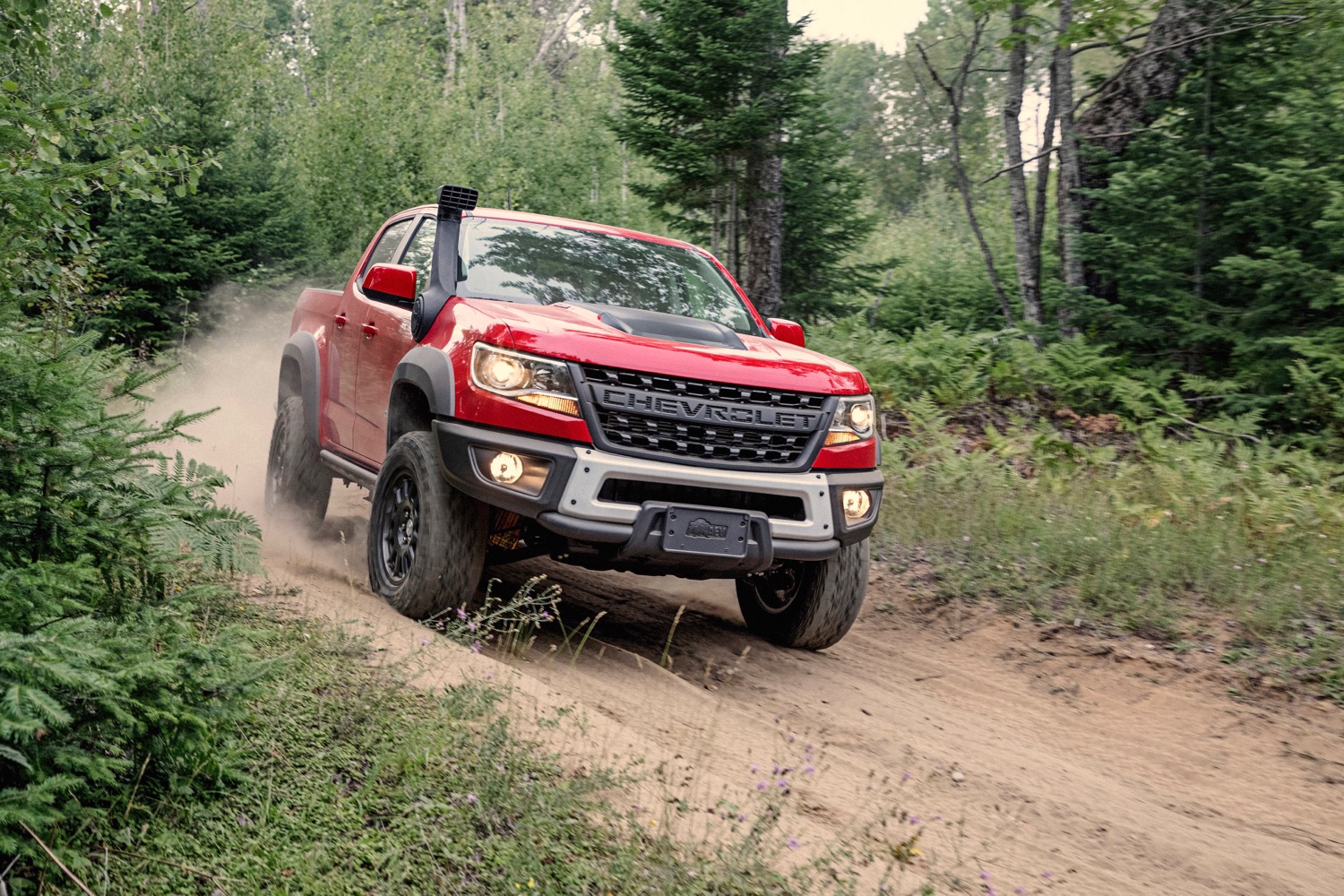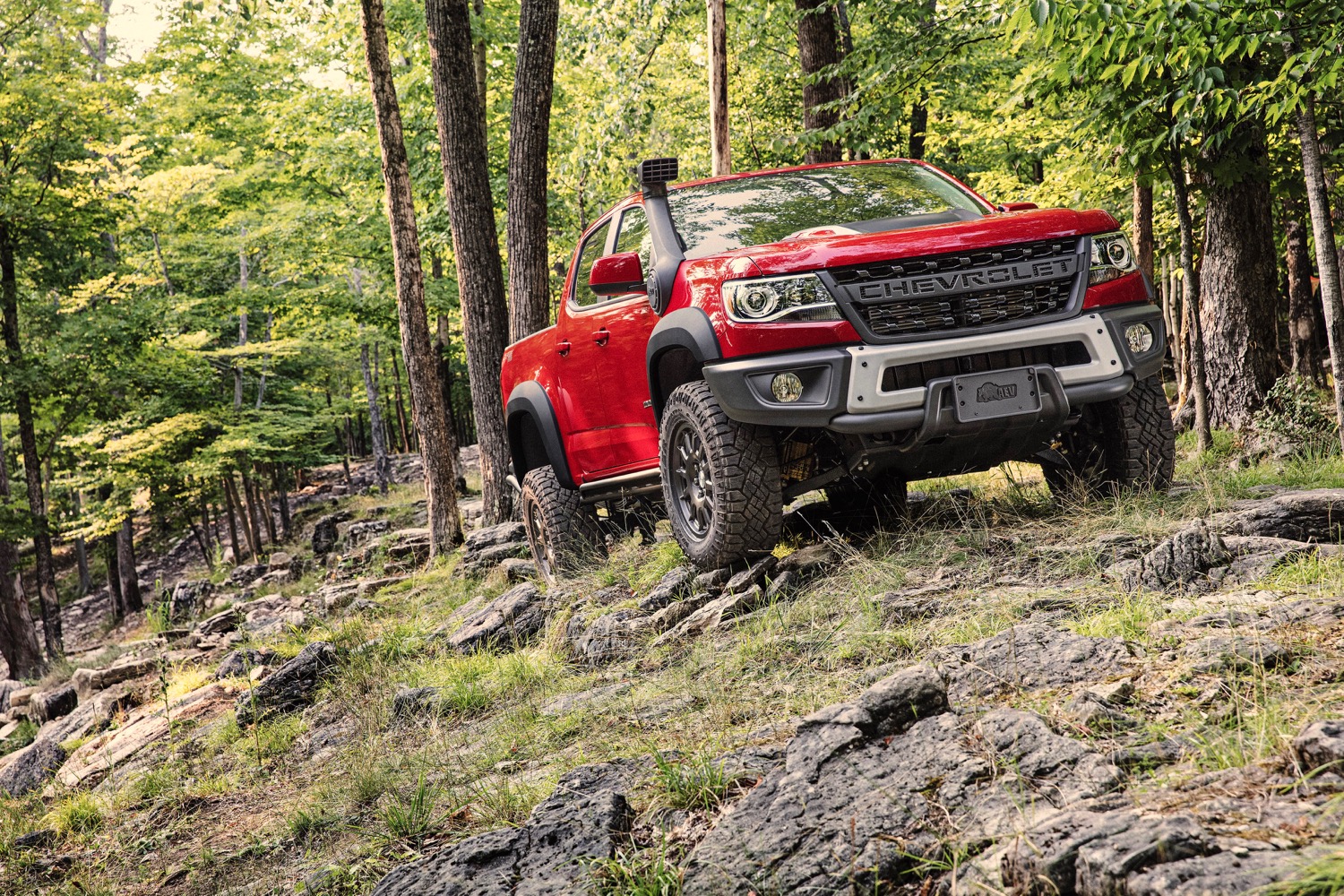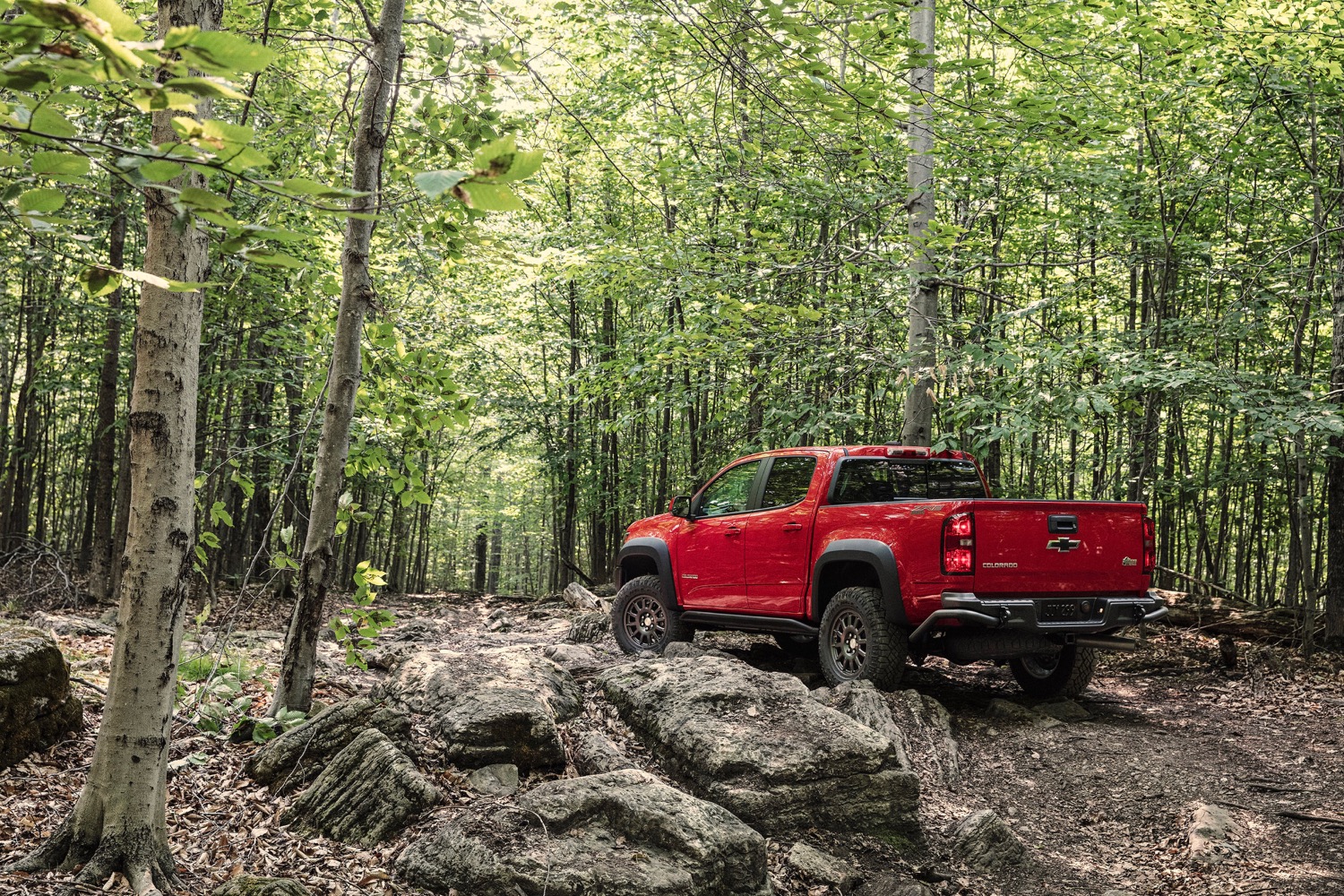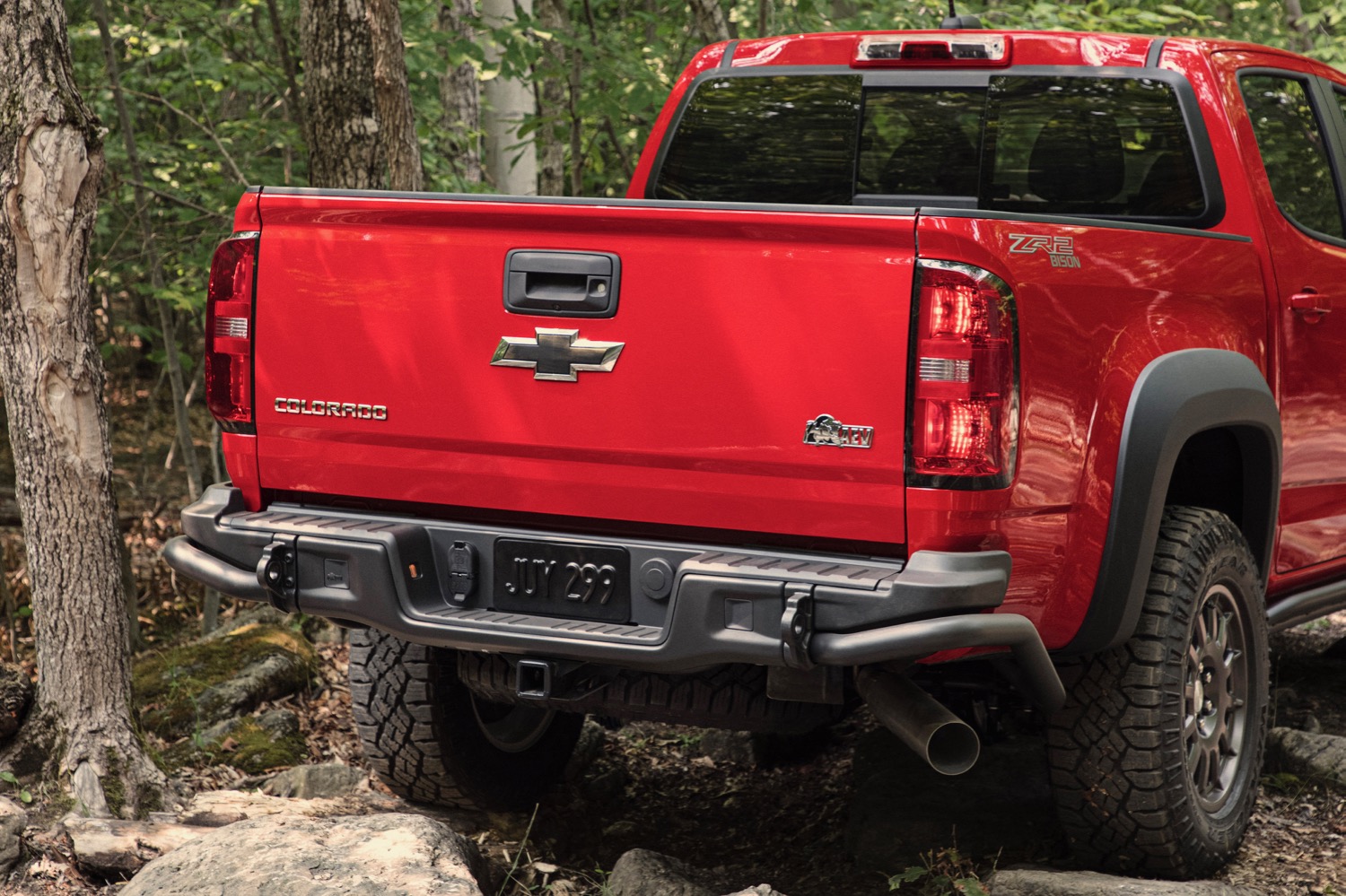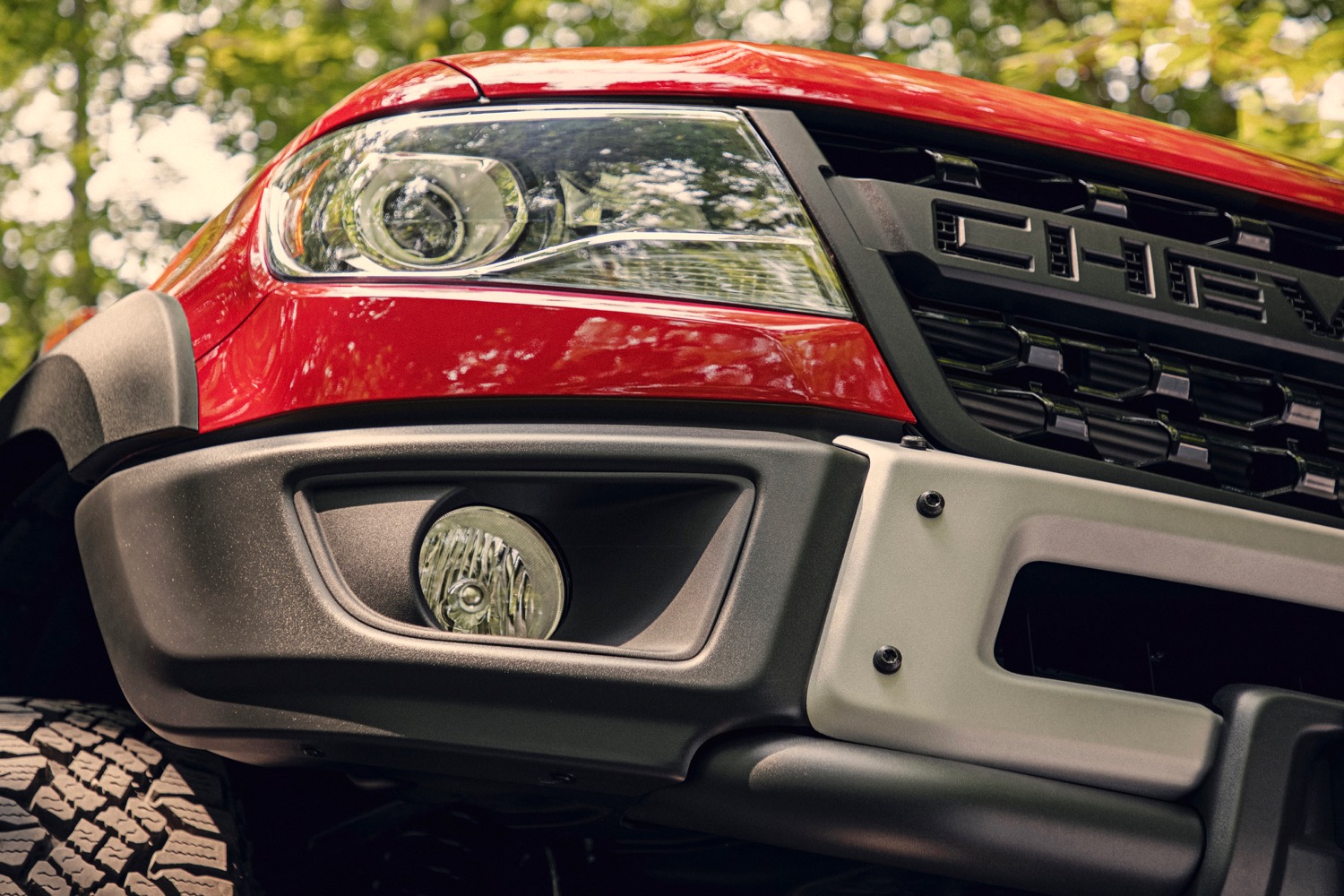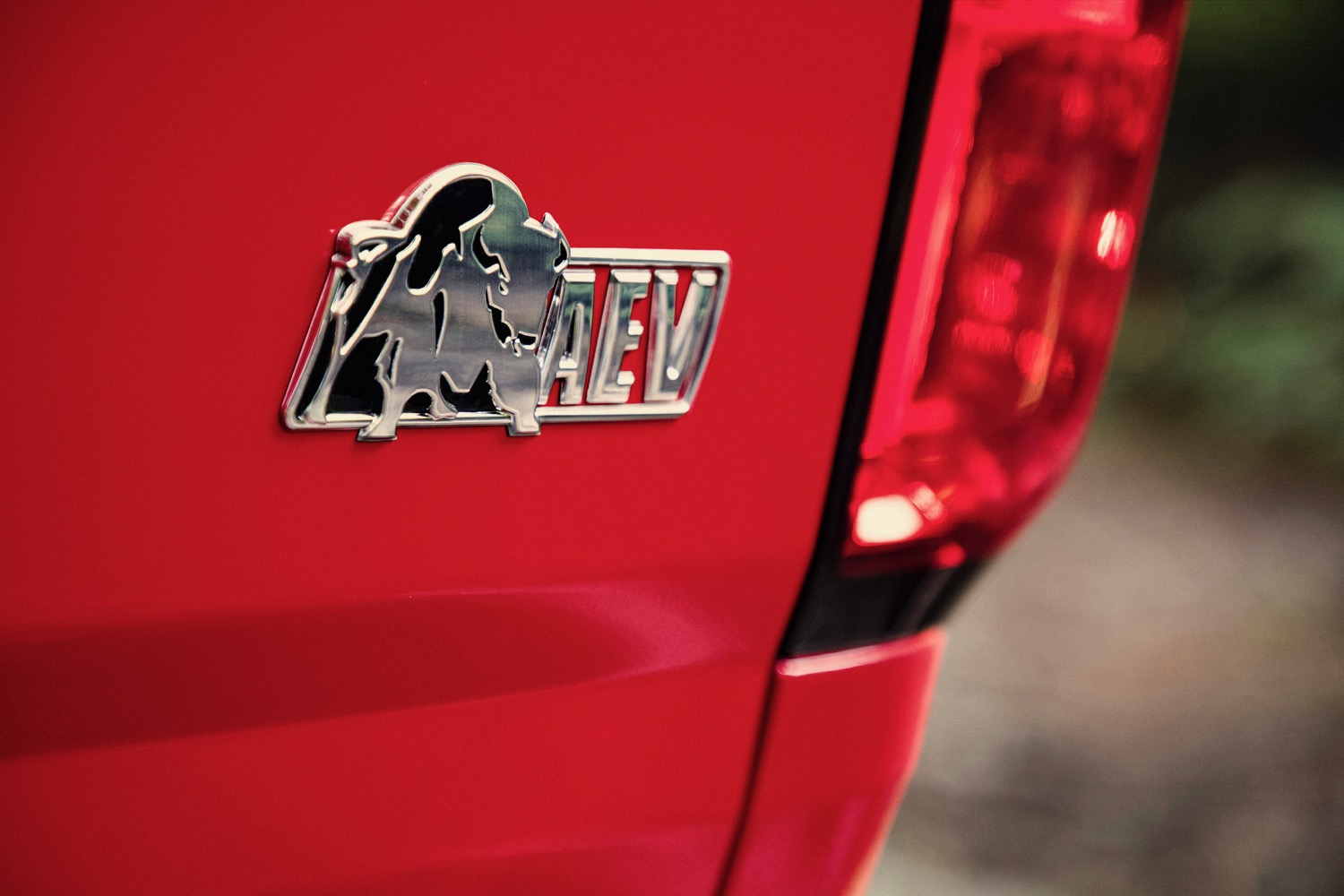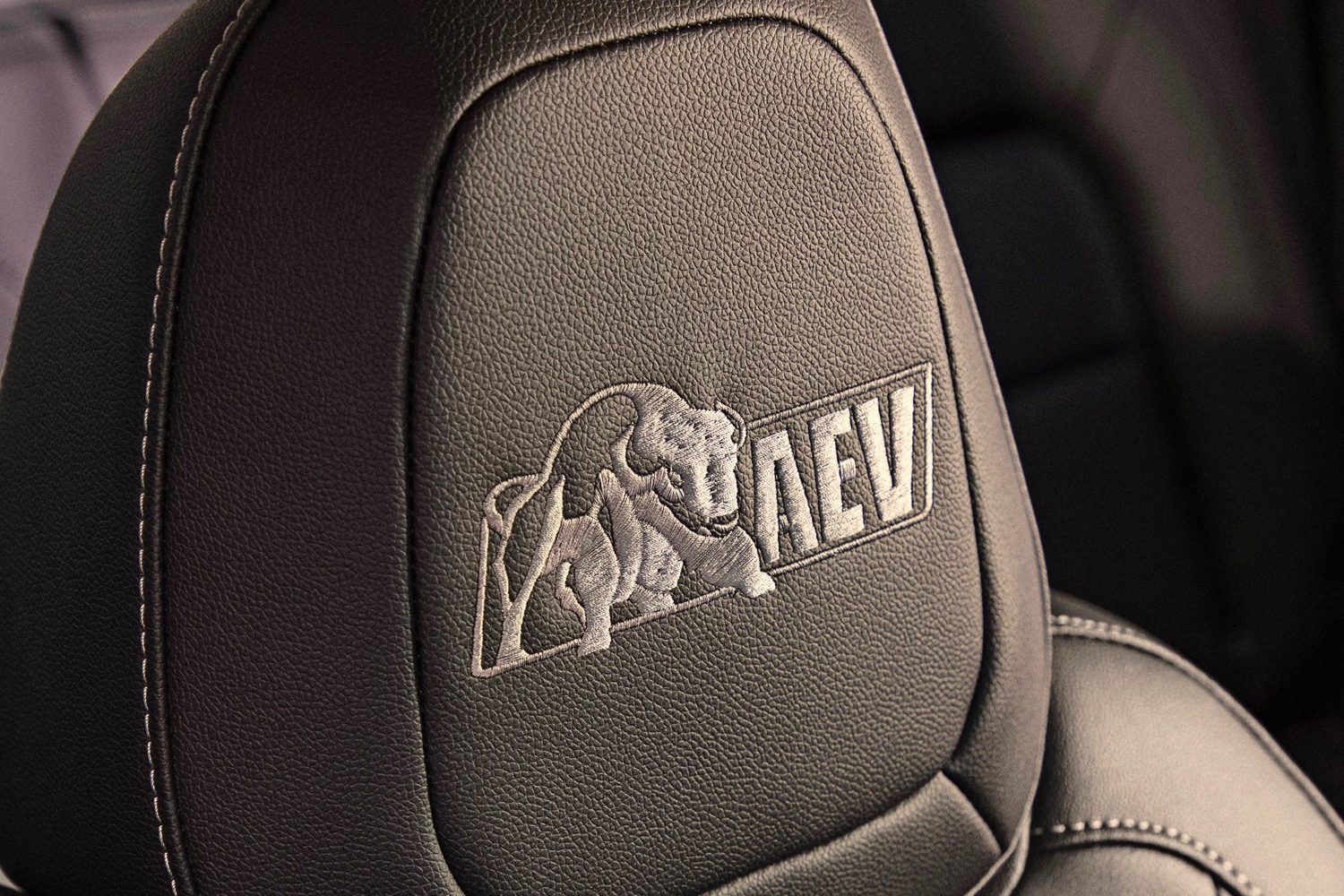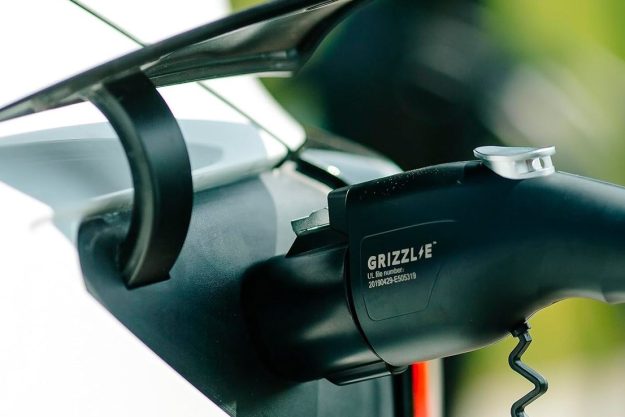The Chevrolet Colorado ZR2 offers plenty of off-road capability, but Chevy was looking to add to the pickup truck’s skill set. So it designed the 2019 Colorado ZR2 Bison to tackle even tougher terrain than the standard ZR2, as well as long-distance overland trips.
Presaged by a 2017 SEMA show concept, the Bison is the result of a collaboration between Chevy and aftermarket manufacturer American Expedition Vehicles (AEV), which sells parts and accessories for off-roaders, as well as complete upgrade packages that can turn a stock vehicle into an all-terrain hero. AEV usually focuses on Jeep and Ram vehicles; the ZR2 Bison is its first Chevy project.
The changes actually start underneath the truck, where Chevy added five AEV-designed skid plates to protect key components from getting smashed on rocks as the Bison negotiates rough terrain. The skid plates, which cover the engine’s oil pan, the fuel tank, transfer case, and front and rear differentials, are made of hot-stamped boron steel.
Topside, the Bison features AEV-designed stamped-steel front and rear bumpers. The front bumper includes fog lights and provisions for a winch. The rear bumper has integrated recovery points for attaching cables or chains should the truck get stuck. The Bison also sports a new grille with “Chevrolet” lettering, and model-specific 17-inch aluminum wheels wrapped in 31-inch Goodyear Wrangler Duratrac off-road tires — the same size as the standard ZR2. Fender flares accommodate the massive rubber.
The Bison-specific equipment is added on top of the standard ZR2’s off-road hardware, which includes front and rear locking differentials, Multimatic DSSV dampers that Chevy claims can adjust more quickly than conventional adaptive dampers, and a 2-inch suspension lift over the lower-level Colorado Z71 model.
Engine choices for the Bison are the same as the standard ZR2. Buyers can choose from a 3.6-liter gasoline V6 with 308 horsepower and 275 pound-feet of torque, or a 2.8-liter turbodiesel four-cylinder, rated at 181 hp and 369 lb.-ft. An optional AEV snorkel helps the engine breathe better on dusty trails, according to Chevy, and should also come in handy if the driver decides to take the Bison for a swim.
Chevy will offer the Bison in two body configurations: a four-door crew cab with a short bed, or an extended cab with rear half doors and a long bed. The Bison goes on sale in January 2019, and Chevy will announce pricing closer to that time. Expect to pay a premium over the standard ZR2’s $40,995 base price.
